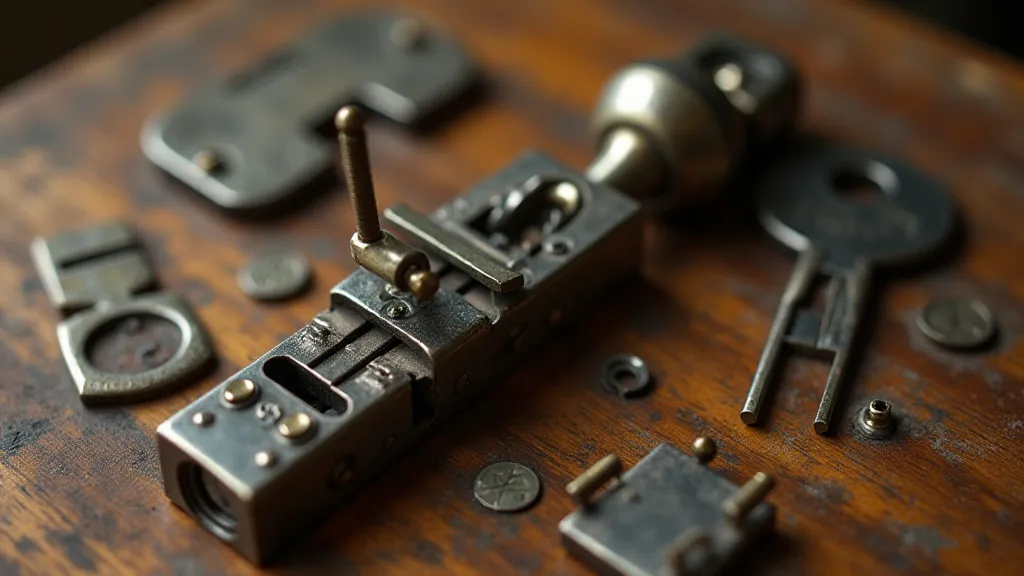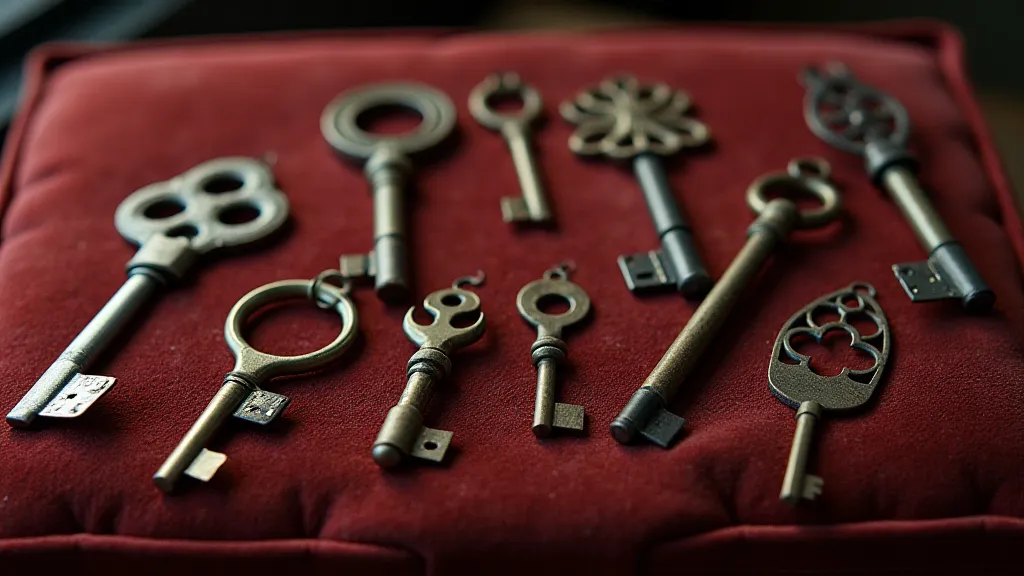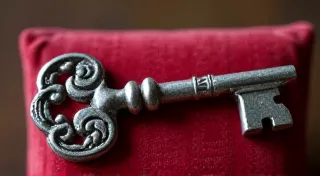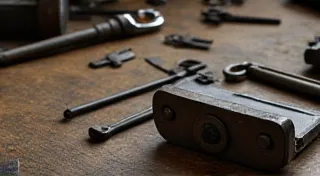From Ward to Bit: The Evolution of Antique Key Designs
Antique keys are more than just functional objects; they are miniature works of art, testaments to the ingenuity of locksmiths throughout history, and tangible links to past eras. Understanding the evolution of key design is crucial for any serious key collector. This article will explore the fascinating history of key designs, from the earliest warding systems to the complex pin tumbler mechanisms we recognize today. The history of these intricate mechanisms is intertwined with the broader history of locksmithing itself, revealing a constant drive for innovation and security.
The Dawn of Warded Keys
The earliest keys, appearing in ancient civilizations like Egypt, Greece, and Rome, were fundamentally different from what we commonly think of as a “key.” These were often simple levers or wards—small, movable obstructions—that needed to be manipulated to unlock a door or chest. Around 1000 BC, sophisticated warding systems began to emerge, where a series of raised projections (wards) within the lock needed to be aligned with corresponding cuts on the key to allow rotation. The concept wasn't about a ‘bit’ matching grooves; it was about the key's profile diverting the wards. The symbolism embedded within these early locking systems goes beyond mere functionality, echoing deeper cultural beliefs—a connection explored in detail in the symbolism of keys in history and folklore.

These early warded keys were relatively crude, easily duplicated, and vulnerable to tampering. However, they represented a significant advancement in security. The position of the wards on the key corresponded to the internal obstructions within the lock, creating a rudimentary form of security.
The Introduction of the Bit: A Step Towards Precision
The development of the bit – the tapered portion of the key that engages with the lock’s mechanism – marked a significant shift in key design. While the precise origin is debated, it’s believed to have emerged in Europe during the Medieval period, evolving from the warded key concept. The introduction of the bit allowed for more precise alignment with internal levers and pins, improving security and allowing for more complex designs. This development allowed locksmiths to create keys that were more difficult to duplicate. The evolution from the earlier warded systems directly influenced the types of keys that later emerged, including the distinction between mortise and bit keys – a difference many collectors find fascinating.
The Renaissance and the Rise of Complex Wards
The Renaissance saw a flourishing of locksmithing artistry. Locksmiths began to incorporate elaborate wards into keys and locks, often reflecting the owner’s coat of arms or personal symbols. These keys were not only functional but also beautiful objects, often crafted from precious metals and adorned with intricate carvings. The complexity of the wards increased, making duplication significantly harder. However, these locks remained susceptible to picking – a challenge that spurred further innovation. The craftsmanship involved often required specialized knowledge and skill, directly shaping the profession of the locksmith.
The Pin Tumbler Revolution
The 18th and 19th centuries witnessed a transformative innovation: the pin tumbler lock. Inventors like Robert Barron, and later, Elias Burgin in the US, pioneered designs utilizing a series of pins that needed to be aligned perfectly by the key’s bit before the cylinder could rotate. This represented a quantum leap in lock security. The pin tumbler mechanism made it much harder to pick, as it required precise manipulation of multiple pins. The rise of industrialization also meant that lock manufacturing became more standardized and accessible. The mechanics are quite elegant, but many early implementations allowed for the creation of master keys, providing access beyond a single lock.

The development of pin tumbler locks, while a significant advancement, also introduced new complexities in key design and manufacturing. The precision required often meant a move towards more specialized key blanks and cutting techniques.
Lever Locks and the Era of Increased Security
Alongside the pin tumbler, lever locks also gained prominence. These locks utilized levers instead of pins, offering a different approach to security. While less common than pin tumblers, they were considered particularly secure and were often found in high-security applications. Lever locks presented a distinct design challenge for locksmiths, requiring careful consideration of lever placement and key geometry to ensure effective security.
Understanding Key Types: Mortise vs. Bit
While discussing the evolution of keys, it's helpful to understand the different types that emerged. The distinction between mortise and bit keys can be subtle, but understanding this difference is crucial for collectors. Mortise keys, often associated with older lock designs, utilize a slotted key that engages with a mortise lock—a recessed area within the door or furniture. Bit keys, on the other hand, use a tapered bit to interact with levers or pins. Many collectors focus specifically on one type or the other, appreciating the unique designs and historical significance of each. The nuances in their designs and functionality represent a testament to the locksmith’s continuous refinement of the locking process.
The Impact of Industrialization on Key Design
The Industrial Revolution brought significant changes to key manufacturing. Mass production techniques allowed for greater standardization, leading to more readily available key blanks and improved cutting accuracy. However, the quest for increased security also led to more complex key designs, pushing the boundaries of both locksmithing artistry and engineering precision. This era also saw the rise of specialized locksmithing tools and techniques, furthering the evolution of the profession.
The Legacy of Antique Key Design
The evolution of antique key designs reflects a constant arms race between locksmiths and those seeking to circumvent security measures. From the rudimentary warding systems of ancient civilizations to the sophisticated pin tumbler mechanisms of the Industrial Age, each innovation built upon the knowledge and ingenuity of those who came before. Understanding this history allows key collectors to not only appreciate the aesthetic beauty of antique keys but also to grasp the fascinating engineering and artistry behind them. The stories these keys tell are rich and varied, reflecting the social, technological, and economic changes that shaped human history. The careful study of these objects allows us to connect with the past in a tangible and meaningful way.

Beyond their functional purpose, antique keys have also become symbols of heritage, craftsmanship, and the enduring quest for security. Collectors are increasingly drawn to the stories behind these objects, seeking to understand the historical context in which they were created and used. The intricate designs and meticulous craftsmanship of these keys represent a testament to the ingenuity and artistry of generations of locksmiths. The enduring appeal of antique keys lies in their ability to connect us with the past and remind us of the importance of security and innovation.
Further research into the symbolism of keys in history and folklore can provide a deeper appreciation for their cultural significance, while delving into the history of locksmithing sheds light on the technical advancements that shaped their evolution.





